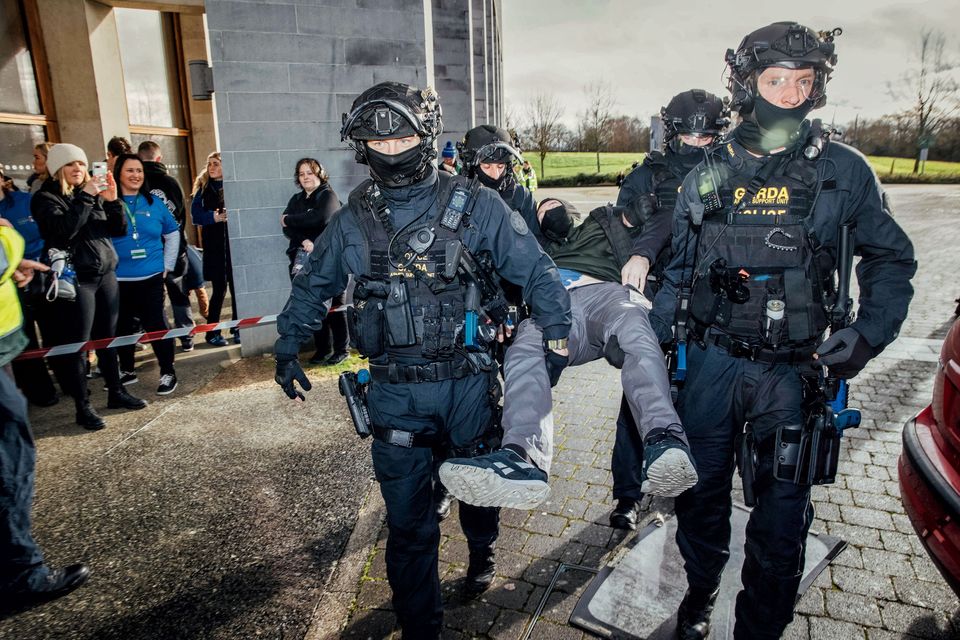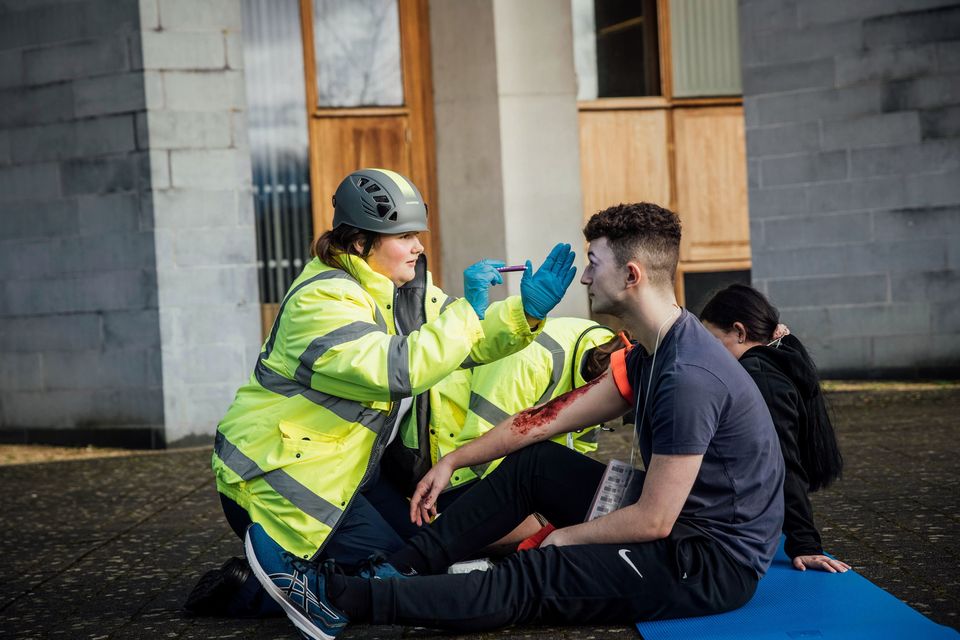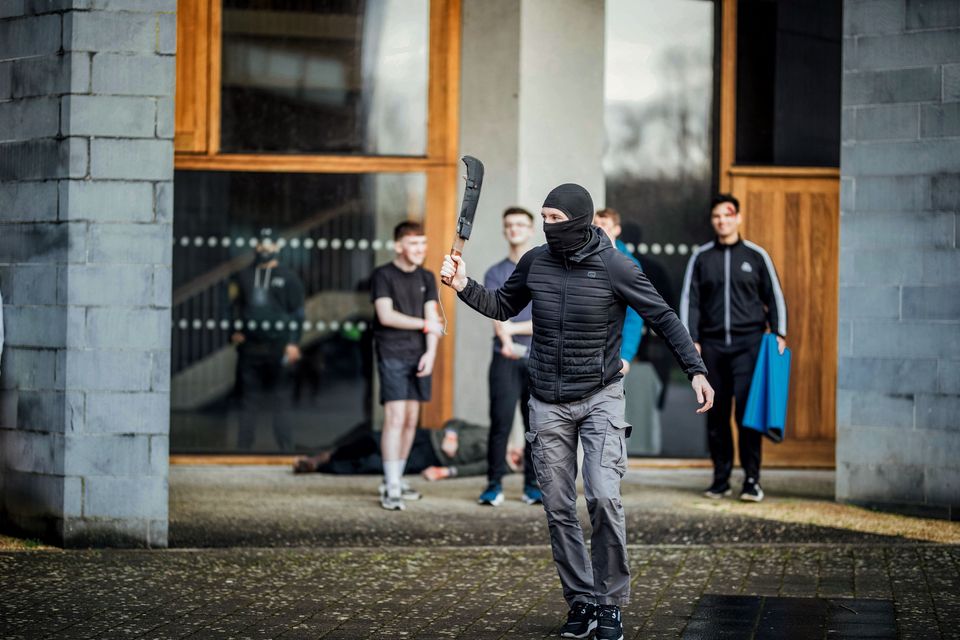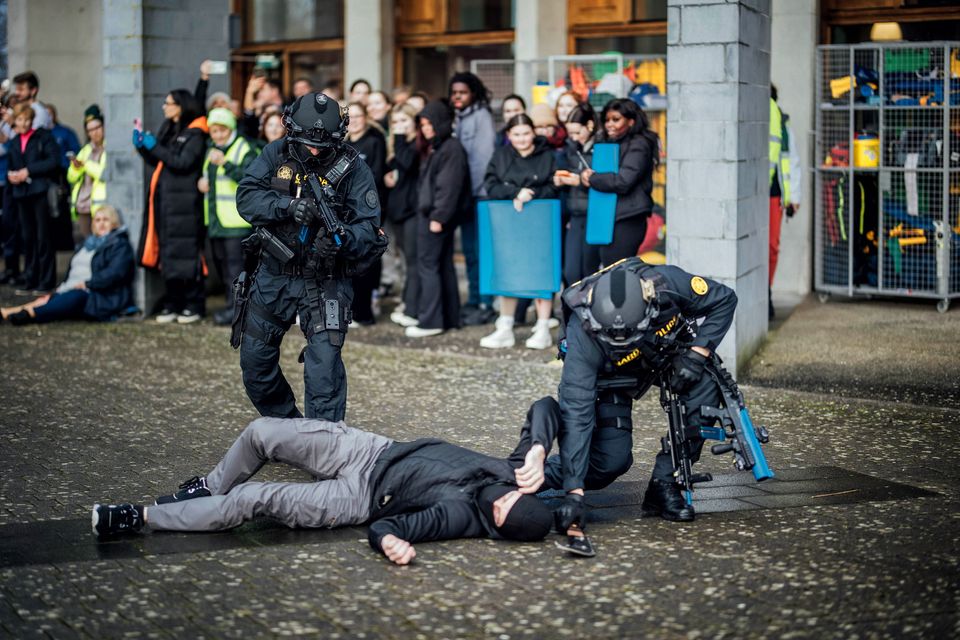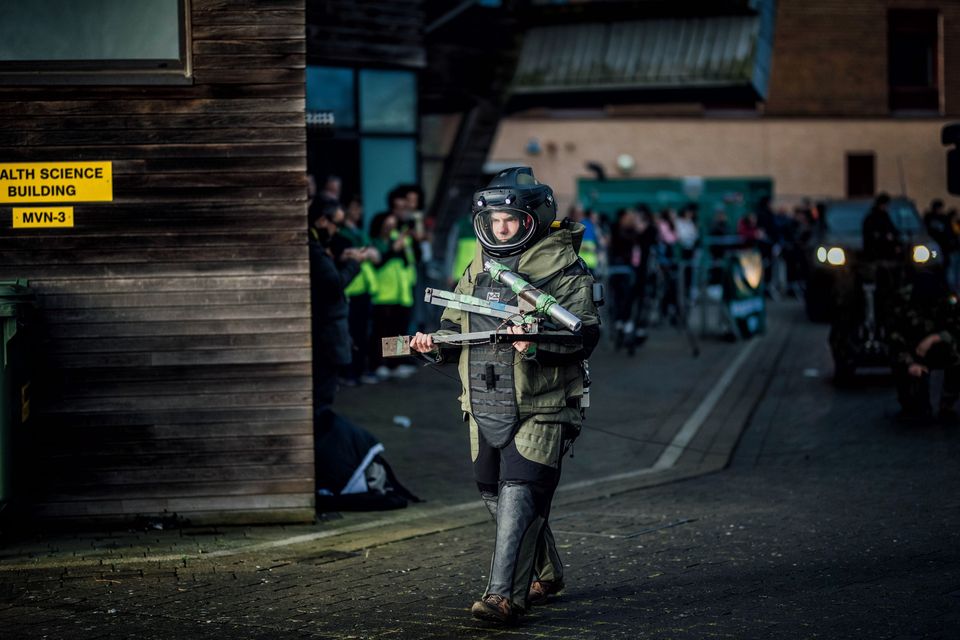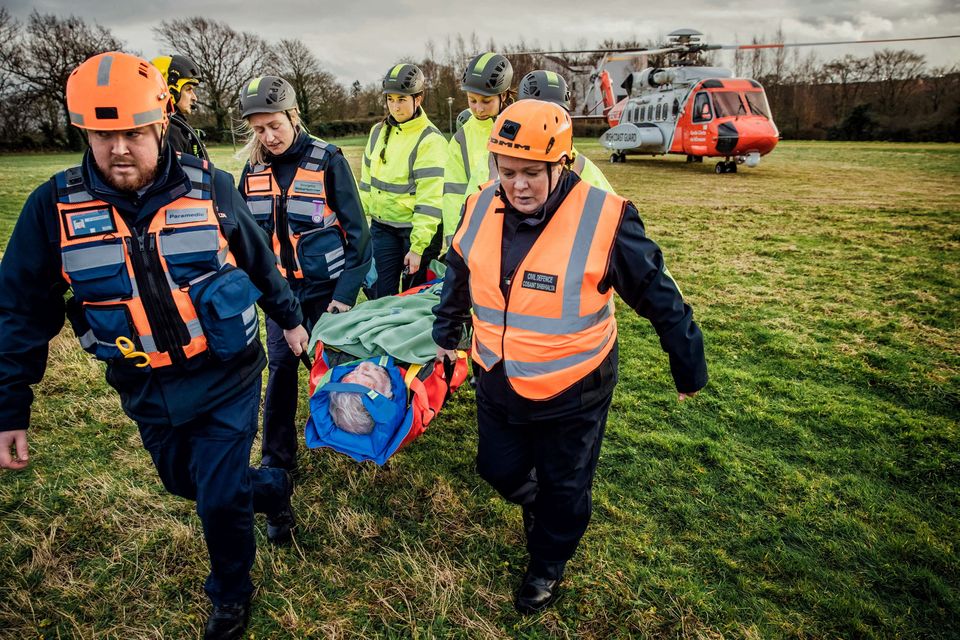The major incident exercise took place on Thursday, January 25, and involved students from paramedics, medicine and nursing, alongside personnel from the emergency services.
The immersive simulation, the largest of its kind ever to take place in Ireland, was designed to prepare both students and professionals for a multi-casualty, major incident where an inter-professional response is required across multiple agencies.
A major incident exercise involving students from paramedics, medicine and nursing, alongside personnel from the emergency services, was staged at University of Limerick. Photo: Brian Arthur
Members of Limerick Fire and Rescue Service, National Ambulance Service (NAS), Explosive Ordnance Division (EOD) of the Irish Defence Forces (bomb squad), An Garda Siochána Armed Support Unit, and Limerick Civil Defence were also involved in this highly realistic operation.
The extremely realistic scenario that played out on the North Campus Plaza in UL involved a car crashing into a substantial crowd of people. The driver remained trapped in the car, but the front-seat passenger exited the car with a handgun and what looked like an explosive device.
The driver of the armed gang is cut from the getaway car as the Largest ever immersive simulation thrusts UL students into emergency situation. Photo: Brian Arthur
After dropping the device, he fired shots at several bystanders before escaping to the River Shannon. There he was picked up by the Civil Defence’s Swift Water Rescue team and the Armed Support Unit.
At the same time, the backseat passenger of the car approached the crowd wielding a machete. He ‘injured’ a number of people before the crowd overpowered him and held him until the Armed Support Unit arrested him and made the machete safe. The Explosive Ordnance Division of the Defence Forces then arrived to deal with the ‘device’.
An injured civilian is taken from the scene by An Garda Siochana Armed Support Unit as the Largest ever immersive simulation thrusts UL students into emergency situation. Photo: Brian Arthur
UL paramedics, nursing and medical students were tasked with managing the scene and providing emergency assistance to those involved. There was a large number of people in the incident area with various levels of injury and in various levels of distress.
A civilian is seen to by a UL Paramedic Student as the Largest ever immersive simulation thrusts UL students into emergency situation. Photo: Brian Arthur
The UL students, while aware the exercise would take place today, were unaware as to what the scene would entail and so were reacting to the exercise as it unfolded.
Frank Keane, Senior Clinical Teaching Fellow on the BSc in Paramedic Studies at UL, specialises in major incident training. He described how the simulation is built around concept-based learning.
A man wielding a machete at the largest ever immersive simulation thrusts students into emergency situation at University of Limerick. Photo: Brian Arthur
“This exercise gave those involved a drill in preparing and responding to an evolving emergency situation, action manoeuvres across different disaster locations, handling multiple casualties, dealing with a crime scene, and implementing a swift-water rescue.
“It gives the students the opportunity to gain exposure to life-changing situations. For the experienced professionals, it’s an opportunity to develop their skills under pressure.”
A man wielding a machete is taken to ground by An Garda Siochana Armed Support Unit at the largest ever immersive simulation thrusts UL students into emergency situation at University of Limerick.
Photo: Brian Arthur
Over 50 ‘casualties’ had to be triaged and treated by paramedics, nursing and medical students, who also were tasked with erecting a field hospital. The event culminated in the arrival of Irish Coast Guard Helicopter Rescue 115 where the students who were all closely supervised, had the unique opportunity to practice loading a stretcher onto the helicopter while the rotor blades were turning.
Explosive Ordnance Division (EOD) makes his way to safely detonate a bomb at the largest ever immersive simulation thrusts students into emergency situation at University of Limerick. Photo: Brian Arthur
Also present was a class of students from Carlow Institute of Further Education as part of the work for their own area of study in Special Effects Makeup. Through collaboration with the Irish Guide Dogs Association, one blind person (who uses a cane) was also ‘injured’ in the incident.
A severely injured civilian was airlifted by Limerick Civil Defence from the Irish Coast Guard Helicopter as the Largest ever immersive simulation thrusts UL students into emergency situation. Photo: Brian Arthur


